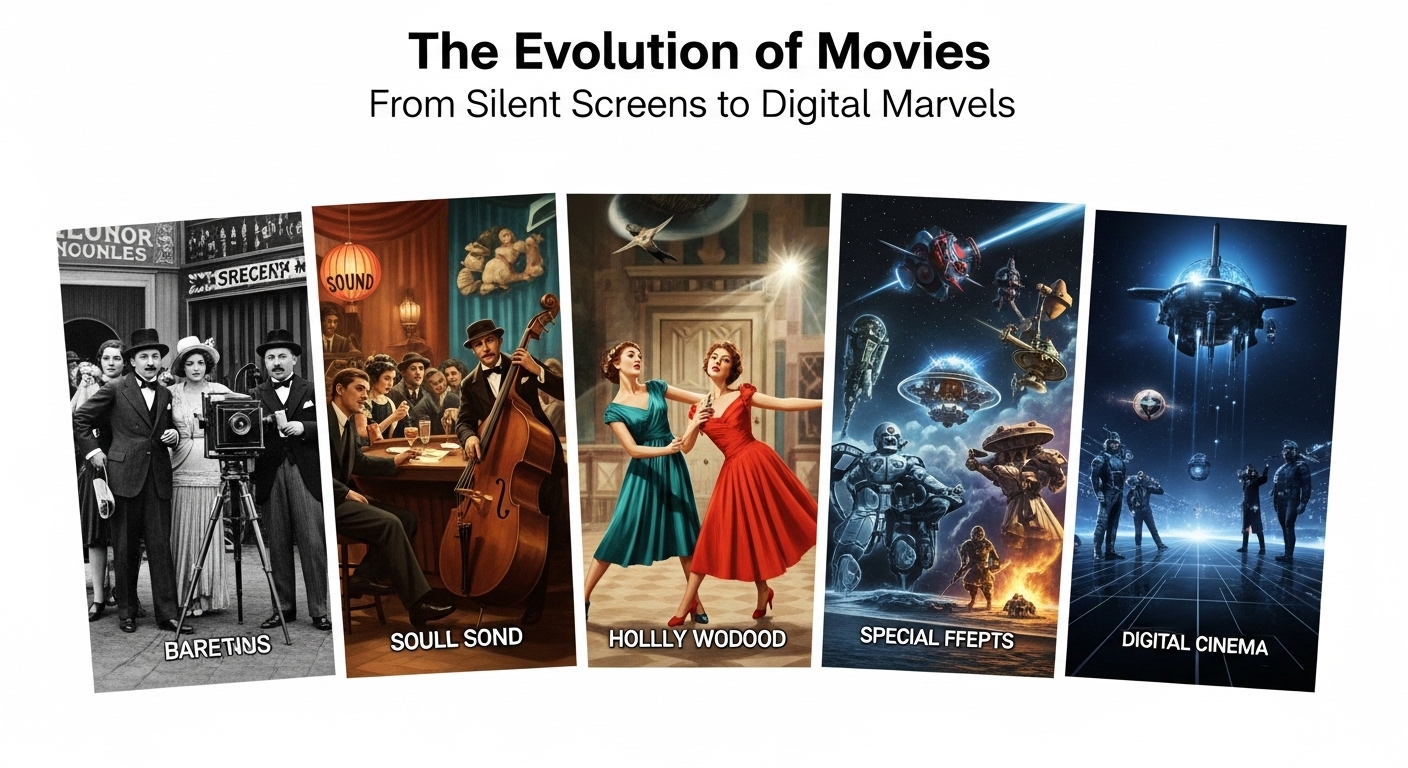Movies: A Journey Through Time, Emotions, and Technology
Movies have been a significant part of our lives for over a century, captivating audiences with their storytelling, visuals, and emotions. From the early silent films to the latest blockbusters, movies have evolved in various ways, reflecting the changing trends and technologies of each era. In this blog post, we will explore the history, significance, applications, and future trends of movies, delving into the magic that continues to mesmerize audiences worldwide.
**The History of Movies: From Silent Screens to Digital Spectacles**
Movies have come a long way since the Lumière Brothers showcased the first motion picture in 1895. The silent era of cinema saw the birth of iconic stars like Charlie Chaplin and Buster Keaton, who communicated emotions and stories without uttering a single word. The introduction of synchronized sound in the late 1920s revolutionized the industry, giving rise to the golden age of Hollywood and classics like “Gone with the Wind” and “Casablanca.”
The advent of color films in the 1930s added a new dimension to storytelling, enhancing visual appeal and realism. The 1950s and 60s witnessed the rise of epic films like “Ben-Hur” and “Lawrence of Arabia,” showcasing the grandeur and spectacle that movies could offer. The 1970s brought a wave of innovation with the rise of independent cinema and auteurs like Martin Scorsese and Francis Ford Coppola, pushing boundaries and experimenting with narrative styles.
The digital revolution of the late 20th century and the 21st century transformed the way movies are made and consumed. CGI (computer-generated imagery) revolutionized special effects, allowing filmmakers to create stunning visuals and immersive worlds. The rise of streaming platforms like Netflix and Amazon Prime has democratized access to films, making it easier for audiences to discover a diverse range of content from around the globe.
**The Significance of Movies: Reflections of Society, Art, and Culture**
Movies hold a mirror to society, reflecting its values, beliefs, and aspirations. They have the power to inspire, educate, and entertain, shaping our perceptions and influencing our emotions. From social dramas that address pressing issues to comedies that provide much-needed escapism, movies offer a diverse range of experiences that cater to different tastes and preferences.
Artistically, movies are a form of visual storytelling that combines various elements like cinematography, editing, sound design, and acting to create a cohesive narrative. Directors, writers, actors, and technicians collaborate to bring stories to life, evoking emotions and sparking conversations that resonate with audiences. The cinematic language of movies transcends barriers of language and culture, making them a universal medium of communication and expression.
Culturally, movies play a vital role in preserving heritage, traditions, and memories. Historical films capture significant events and moments in time, preserving them for future generations to learn from and appreciate. Foreign films offer a window into different cultures and perspectives, fostering empathy and understanding across borders. Through movies, we can travel to distant lands, explore diverse lifestyles, and experience a myriad of emotions that enrich our understanding of the world.
**Applications of Movies: Entertainment, Education, and Advocacy**
Movies serve a multitude of purposes beyond entertainment, including education, advocacy, and social change. Educational films can inform audiences about complex issues, historical events, and scientific discoveries in an engaging and accessible manner. Documentaries shed light on pressing social, environmental, and political issues, raising awareness and inspiring action.
Movies can also be a powerful tool for advocacy and activism, amplifying voices that are often marginalized or silenced. Films like “Selma,” “12 Years a Slave,” and “Milk” have highlighted important social justice issues and sparked conversations about equality, diversity, and inclusion. Through storytelling and visual imagery, movies have the power to challenge stereotypes, confront prejudices, and promote empathy and understanding.
**Future Trends in Movies: Technology, Diversity, and Sustainability**
The future of movies is poised for exciting developments in technology, storytelling, and representation. Virtual reality (VR) and augmented reality (AR) are reshaping the cinematic experience, allowing audiences to immerse themselves in interactive narratives and virtual worlds. AI (artificial intelligence) and machine learning are being used to analyze audience preferences and create personalized content tailored to individual tastes.
Diversity and representation are gaining prominence in the film industry, with calls for more inclusive stories, diverse casts, and behind-the-scenes diversity. Movements like #OscarsSoWhite and #MeToo have sparked conversations about equality, gender parity, and racial representation in movies, leading to a push for more diverse voices and perspectives in storytelling. The future of movies lies in embracing diversity, equity, and inclusion as essential values that enrich the cinematic landscape.
Sustainability is also becoming a critical issue in the film industry, with a growing focus on reducing carbon footprints, promoting eco-friendly practices, and advocating for environmental stewardship. Filmmakers are exploring ways to minimize waste, conserve resources, and promote sustainable production methods to mitigate the environmental impact of movie-making.
**Conclusion: The Endless Magic of Movies**
Movies have the power to transport us to different worlds, evoke a range of emotions, and spark conversations that resonate across generations. From the early days of silent films to the digital spectacles of today, movies continue to captivate and inspire audiences worldwide. As we journey through the history, significance, applications, and future trends of movies, we discover the endless magic and possibilities that this timeless art form offers. So grab some popcorn, sit back, and let the magic of movies unfold before your eyes.

